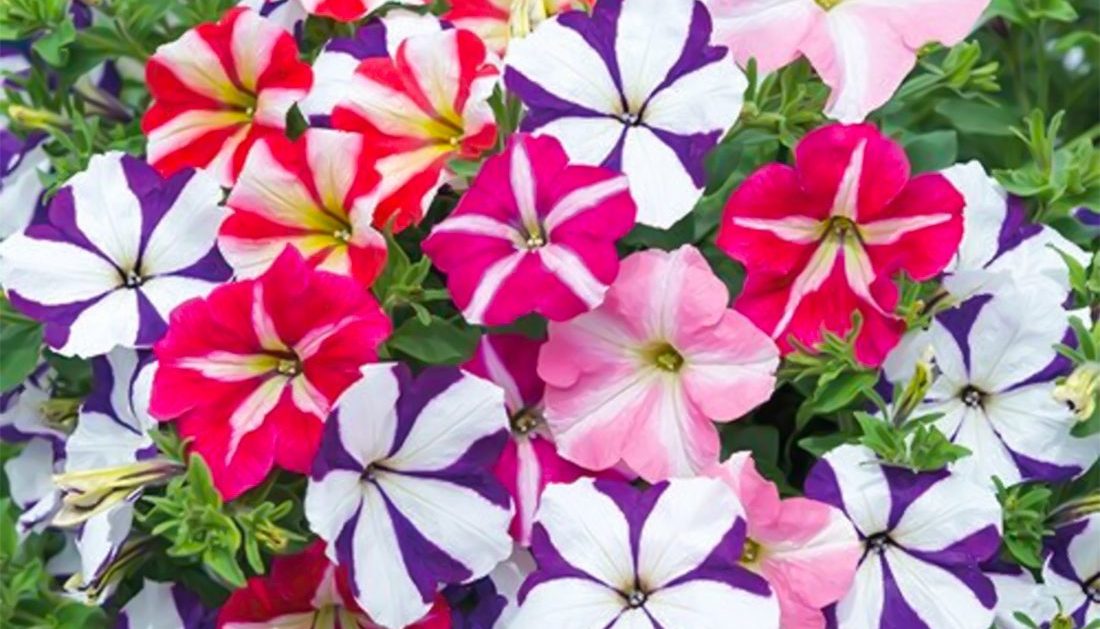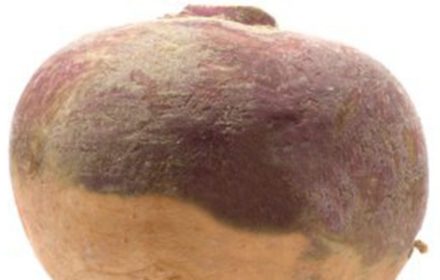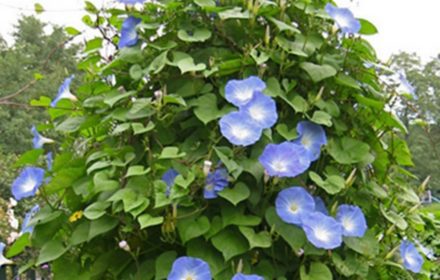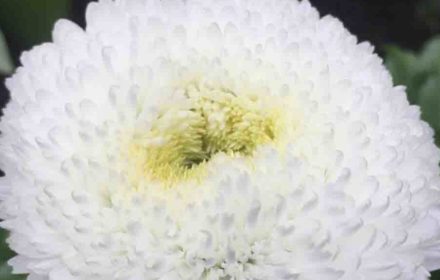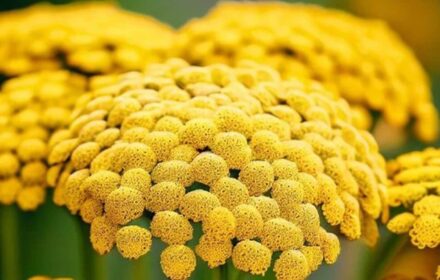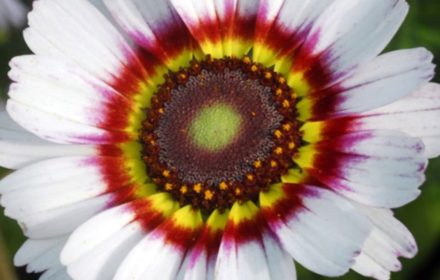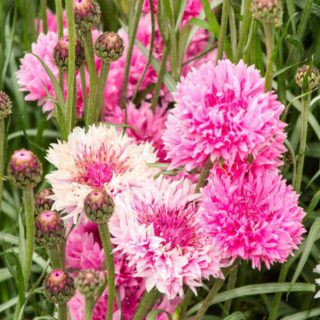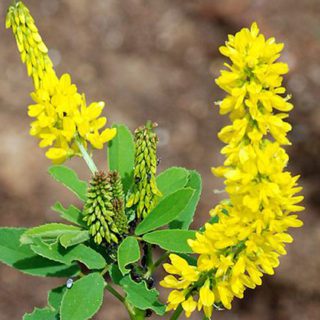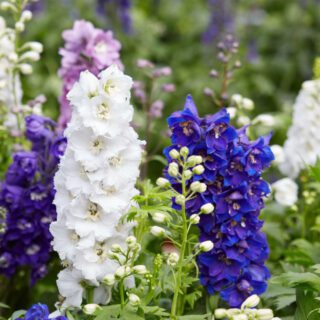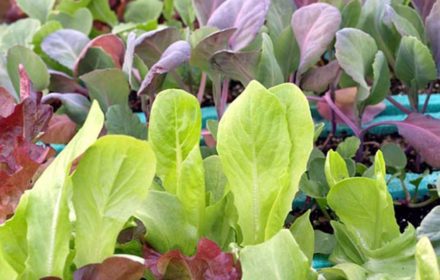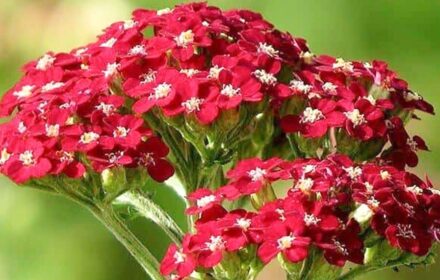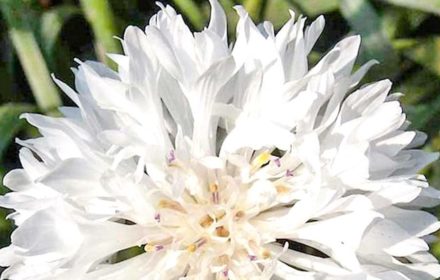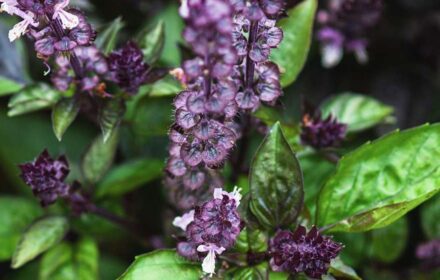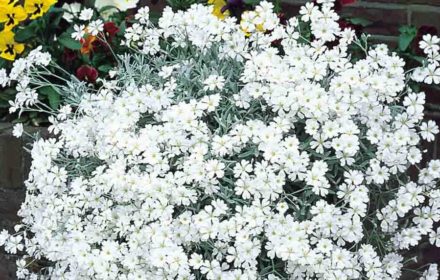Growing Double Mix Trailing Petunia from Seeds in the UK
Double Mix Trailing Petunias are renowned for their stunning 4-inch, fully double blooms in vibrant shades of blue, crimson, red, and rose. This striking variety is perfect for adding a splash of colour to hanging baskets, window boxes, beds, and borders. As a half-hardy annual, it thrives in sunny conditions and well-drained soil, creating beautiful, cascading displays. With proper care and maintenance, these petunias will produce an abundance of flowers throughout the summer. Follow this guide to successfully sow and grow Double Mix Trailing Petunias from seeds in your garden.
When and Where to Sow Double Mix Trailing Petunia Seeds
- Indoor Sowing: Start sowing petunia seeds indoors from January to April. Early sowing allows for stronger plants that will be ready to bloom as soon as the weather warms up. This variety benefits from a long growing season, making early indoor sowing ideal.
- Outdoor Sowing: Direct sowing outdoors is not recommended for petunias in the UK due to the cooler climate. For best results, transplant established seedlings outdoors after the last frost (typically from late May).
Ideal Growing Conditions for Double Mix Trailing Petunia
- Soil Requirements: Petunias prefer well-drained, fertile soil. For container planting, use a high-quality multipurpose compost. If planting in beds or borders, improve soil fertility by incorporating well-rotted compost or manure.
- Sunlight: Choose a sunny spot for your petunias. They need at least 6 hours of direct sunlight daily to produce abundant blooms and maintain their vibrant colours. In less sunny areas, the plants may become leggy and produce fewer flowers.
- Temperature: The ideal temperature for germination is between 21-27°C (70-80°F). Petunias are sensitive to frost, so wait until the danger of frost has passed before transplanting outdoors.
How to Sow Double Mix Trailing Petunia Seeds Indoors
- Sowing Depth and Containers: Fill seed trays or small pots with a fine seed compost. Lightly firm the compost surface but do not compact it. Scatter the petunia seeds thinly on the surface. Do not cover the seeds with compost, as they need light to germinate.
- Germination Conditions: Place the trays or pots in a bright location, such as a windowsill or under grow lights. Cover the containers with a clear lid, polythene bag, or cling film to maintain humidity. Light is essential for germination, which typically takes 10-21 days.
- Watering: Keep the compost moist but not waterlogged. Use a fine mist spray to water, as this helps prevent the small seeds from being disturbed. Remove the cover once the seeds have germinated to improve air circulation and prevent damping off.
- Handling Seeds: For easier handling, mix the tiny seeds with horticultural sand. This will help you spread the seeds more evenly over the compost surface.
Transplanting and Growing On
- Pricking Out: Once the seedlings are large enough to handle and have developed a few true leaves, carefully transplant them into individual pots or trays. Space the seedlings about 5 cm (2 inches) apart to give them room to grow.
- Growing On: Continue to grow the young plants in cooler conditions, around 15-18°C (59-64°F). Ensure they receive plenty of light to prevent legginess. If growing under artificial lights, keep the lights about 10-15 cm (4-6 inches) above the plants.
- Hardening Off: Gradually acclimatise the plants to outdoor conditions by placing them outside during the day and bringing them in at night for about a week. This process will help them adjust to the cooler outdoor temperatures and wind.
- Planting Out: After the last frost has passed, transplant the petunias into their final positions in beds, borders, or containers. Space the plants about 20-30 cm (8-12 inches) apart to allow for bushy growth and trailing habits.
Caring for Double Mix Trailing Petunia Plants
- Watering: Petunias prefer consistently moist soil but do not like being waterlogged. Water regularly, especially in containers, as they can dry out quickly. In dry weather, water deeply at the base of the plant to avoid wetting the foliage.
- Feeding: Feed your petunias every 10-14 days with a high-potassium fertiliser to encourage prolific blooming. A liquid tomato feed is ideal for promoting flower production.
- Deadheading: Regularly deadhead spent blooms to encourage continuous flowering and maintain a neat appearance. Removing faded flowers prevents the plant from setting seed and promotes new blooms.
- Pruning: If the plants become leggy, trim back the stems by about one-third. This will encourage bushier growth and more side shoots, leading to a fuller display.
Managing Trailing Growth and Pests
- Training and Trailing: To encourage a trailing habit, pinch back the growing tips of young plants. This will promote the development of side shoots and create a denser, more compact plant. Petunias look stunning when allowed to trail over the edges of hanging baskets or containers.
- Pest Control: Petunias can be susceptible to pests such as aphids and whiteflies. Regularly inspect the plants for signs of pests, and treat infestations with insecticidal soap or neem oil if necessary.
Common Questions About Growing Double Mix Trailing Petunia
Can I grow trailing petunias in hanging baskets? Yes, Double Mix Trailing Petunias are ideal for hanging baskets. Their trailing habit makes them perfect for cascading displays. Use a high-quality compost and water regularly to keep the plants healthy and blooming.
Why are my petunias not flowering? Lack of flowering can be due to insufficient light, overfeeding with nitrogen-rich fertilisers, or not deadheading regularly. Ensure the plants receive plenty of sunlight, use a balanced or high-potassium feed, and remove spent blooms to encourage more flowers.
How do I prevent leggy growth in my petunias? Legginess is often caused by insufficient light. Ensure your petunias receive full sunlight and avoid overcrowding. Pinching back the growing tips can also help promote bushier growth.
By following these steps, you can enjoy a vibrant display of Double Mix Trailing Petunias in your UK garden. Whether cascading from hanging baskets or brightening up borders, these beautiful flowers are sure to make a stunning addition to any outdoor space.

